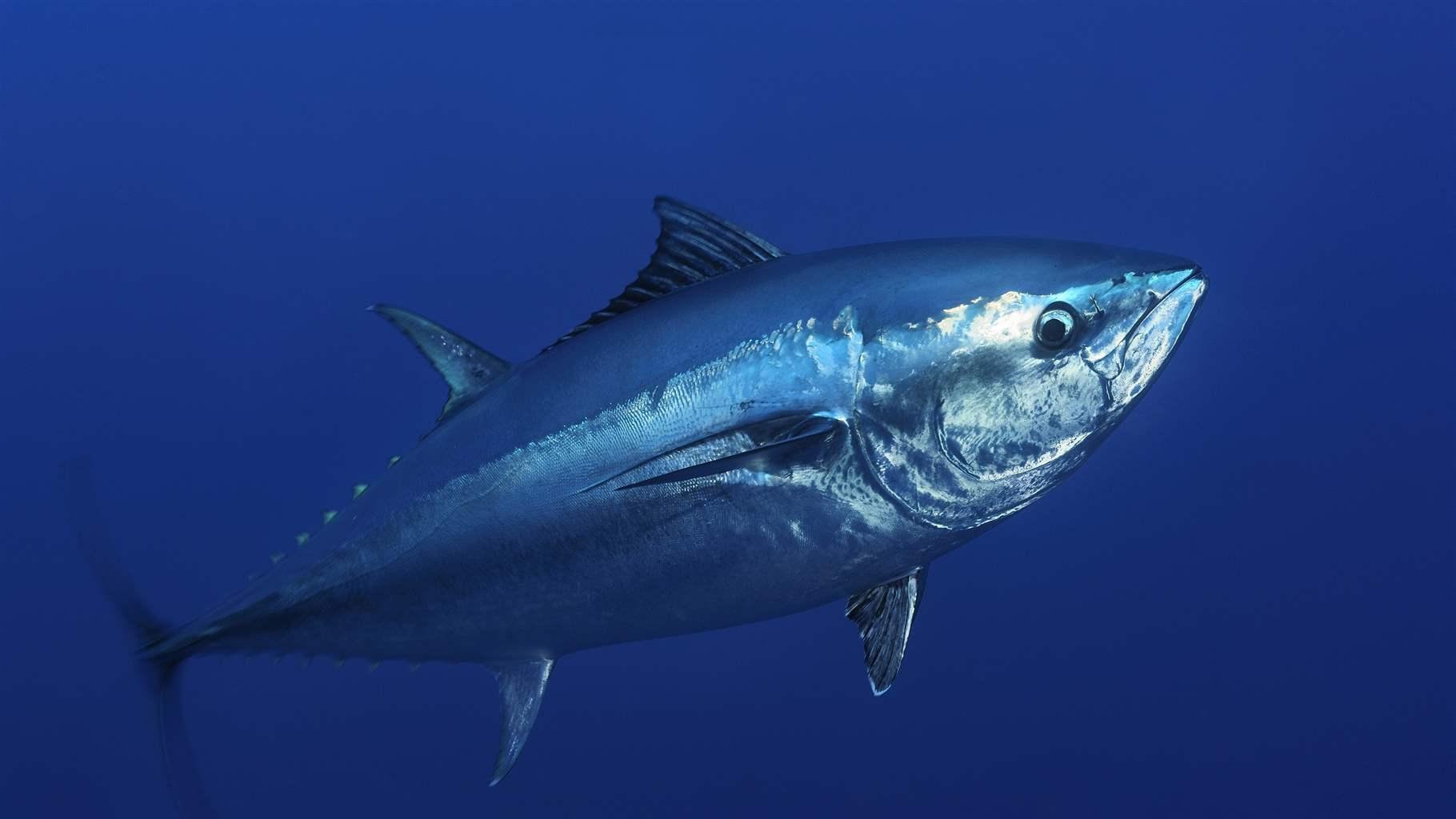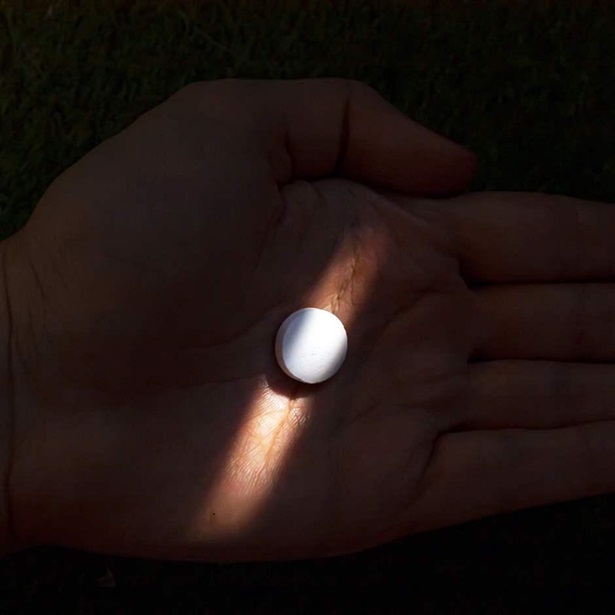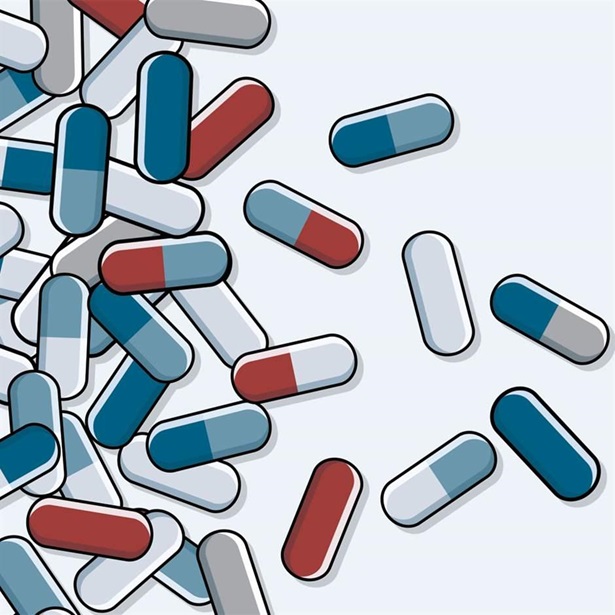For Global Tuna Industry, COVID-19 Complicates Long-Standing Challenges
On World Tuna Day, experts discuss effect on supply chain, sustainability, fisheries management and consumers

The global tuna fishing industry is among the many sectors enduring major impacts from the COVID-19 pandemic. Tunas hold enormous cultural, ecological and economic significance around the world and thus must be managed sustainably, which is why the United Nations designated 2 May as World Tuna Day. To learn how tuna fishers and others in the supply chain are adjusting, The Pew Charitable Trusts caught up with four experts: Shana Miller, senior officer of the International Fisheries Conservation Program at the Ocean Foundation; Quentin Hanich, associate professor at the Australian National Centre for Ocean Resources and Security (ANCORS) at the University of Wollongong; David Schalit, commercial fisher and president of the American Bluefin Tuna Association; and Mark Young, executive director of the International Monitoring, Control and Surveillance (IMCS) Network, and formerly with Pew. These interviews have been edited for clarity and length.
- Shana Miller, senior officer of the Ocean Foundation
- Quentin Hanich, associate professor at ANCORS
- David Schalit, commercial fisher and president of the American Bluefin Tuna Association
- Mark Young, executive director of the IMCS Network
Q: How is COVID-19 impacting your work and tuna fisheries at large?
Hanich: The virus has locked down the Pacific region, creating a serious obstacle to regional cooperation as well as the negotiation and development of collective management strategies. International cooperation requires trust, which requires extensive and regular consultations. Delegates need to spend time together, talking, negotiating and, most importantly, socializing ideas and solutions. The travel bans are critically necessary to prevent the virus from spreading, but the situation is challenging. The region is now developing virtual meetings, but these will be limited by poor-quality internet and lack of alternative modes of communication and will struggle to provide opportunities for problem-solving and difficult negotiations on contentious matters.
Schalit: The onset of the COVID-19 pandemic has occurred between seasons for our U.S. East Coast bluefin fishery—our next season begins 1 June. I’m watching this situation very closely and can make some preliminary observations. Generally, global demand for bluefin is expected to be dramatically reduced during the pandemic. However, given that most bluefin is wild-caught and fattened in ranches, these farms have the possibility to sustain lower sales by maintaining their fish in inventory. In order to do this, they will have to increase their pen capacity to hold 2020 catch.
In the U.S., there may be some limited buying by “high-end” supermarkets. Atlantic bluefin is a sort of “luxury” product in the U.S. because it is fresh and it is caught in the wild, by hand, one fish at a time. At the moment, this market doesn’t exist for our bluefin. There remains the “maki” and sushi product sold by supermarkets. Most urban and suburban supermarkets possess an open refrigerated case for selling chilled “maki” rolls and sushi, packed as individual portions in small plastic containers. We expect that this market, which is only interested in the dark red color of the tuna used and less interested in the fat and oil content, may be able to absorb some of our catch, but the price will be quite low. The foregoing relates not only to bluefin but also yellowfin and bigeye tuna as well.
Q: What are some of the biggest obstacles in your work?
Miller: Fisheries are big business. Global tuna fisheries are worth around $42 billion annually. Many developing countries are justifiably trying to expand their fleets to increase domestic revenues and promote food security. Most bodies that manage tuna fisheries operate by consensus. It only takes one nation to block a conservation measure that they don’t like.
Schalit: These days, the biggest obstacle that U.S. commercial tuna fishers face is the International Commission for the Conservation of Atlantic Tunas’ (ICCAT’s) inability to be decisive in addressing the deplorable state of the Atlantic bigeye tuna fishery. This isn’t an intellectual exercise for us. U.S. fishers like myself are keenly aware of the depressed state of this fish stock—it is reflected in our poor catches. In 2019, ICCAT scientists called for a 40% reduction in overall catch, Atlantic-wide. It’s obvious that a sustained reduction in catch of this magnitude is essential to rebuilding the fish stock. Since the assessment was published, we’ve had two plenary meetings in which a great deal of time was taken up with discussion on this, with no meaningful result. ICCAT has thus far utterly failed to come up with a viable plan for bigeye that addresses the urgent need for action.
Q: What tools have been the most helpful in improving tuna management?
Miller: Any tools that limit catch to sustainable levels—and provide data on that catch—have improved tuna management. In recent years, technological advances, including satellite tracking of vessels, electronic monitoring systems that record what’s happening on deck and electronic trade systems that follow individual fish from sea to sale, have dramatically helped efforts to monitor and control catch, thus reducing illegal fishing.
Young: Some of the most important tools helping to improve management from a compliance and enforcement perspective include ensuring flag State adoption and implementation of international instruments or treaties developed to eliminate illegal fishing. This includes closing avenues for illegal catch to reach the market by implementing port State controls consistent with the new Port State Measures Agreement. Also important are efforts to ensure the seafood industry understands what they need to know to prevent illegally caught fish from entering the market and amending their sourcing policies to ensure they know the sources and origin of their seafood supply. Lastly, one of the most important “tools” available to fisheries compliance and enforcement officers is vessel monitoring systems that allow vessels and their activity to become more transparent to fishery managers, especially where these vessels venture beyond waters of their flag State jurisdiction. The ability for fishing vessel tracking information to become more transparent is important because transparency of this type of information invariability leads to self-correcting behavior.
Q: How would you like to see regional fisheries management organizations (RFMOs) modernize management of their fisheries?
Hanich: RFMOs must continue developing and implementing harvest strategies to prevent overfishing and ensure the long-term viability and profitability of tuna fisheries. In order to adopt these strategies, RFMO members must have a clear understanding of their impacts and benefits—which requires transparency, scientific and economic expertise, and data. These will be the key challenges for tuna RFMOs over the coming decade.
Young: Increased transparency of information is key for RFMOs to modernize management of their fisheries. Making more information publicly available helps fishery managers and other stakeholders make better and more informed decisions. Transparency also facilitates the ability to conduct greater data analysis that allows trends and behaviors to be more readily identified and addressed, especially where they may have adverse impacts on the long-term sustainability of fish stocks. It is not so much about managing tuna, it is about managing the people that fish for tuna.















